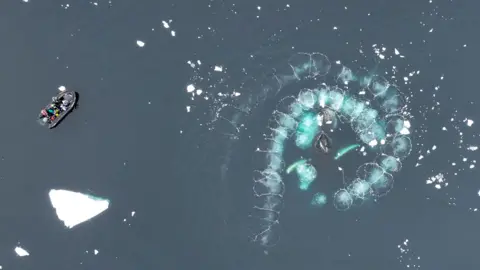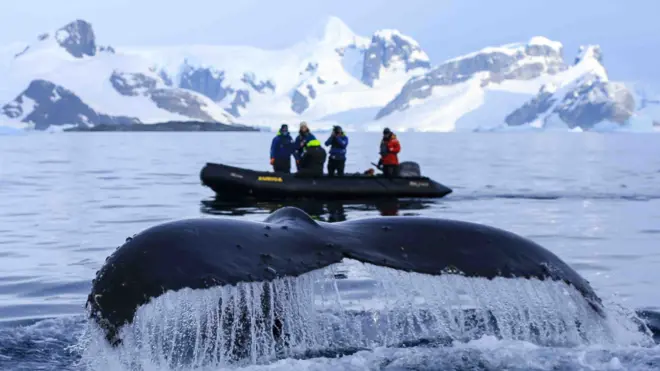"[When we’ve studied humpbacks] feeding in Alaska and off the US coast, the rules are very prescribed,” said Dr Friedlaender.
"There's generally one animal blowing a bubble net around the prey and the other animals have these individual roles.
“In Antarctica, we often see multiple animals in a feeding ground all blowing bubbles at the same time.”
The act can only be seen in detail from the air, so the use of drone cameras has revolutionised scientists’ ability to study it.
 Chris Johnson/WWF/UCSC/Research under NOAA permit
Chris Johnson/WWF/UCSC/Research under NOAA permitFootage of humpback whales twisting and turning has also revealed how efficiently they can manoeuvre their huge bodies.
"Because of the size of their [tails] and flippers - and their ability to use them to pivot - they’re much more acrobatic than other whales," Dr Friedlaender explained.
The aerial view that drones provide has also shed light on the recovery of whale populations in parts of the world where they were hunted to the brink of extinction in the 20th Century.
An international team of researchers, including some from the British Antarctic Survey (BAS), has used drone cameras to study whales in South Georgia, a key location for the whaling industry in Antarctica.
BAS researcher Stephanie Martin shared with the BBC what she says is the first drone footage of a mother-calf pair of southern right whales off the coast of South Georgia.
"Seeing mother and calf pairs [here] is a strong indicator that these populations are slowly recovering," she said.
.jfif)
.jfif)
.jfif)
.jfif)



No comments:
Post a Comment